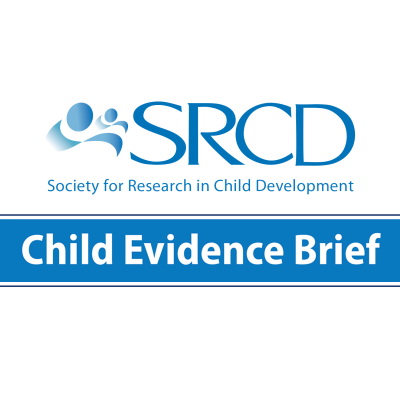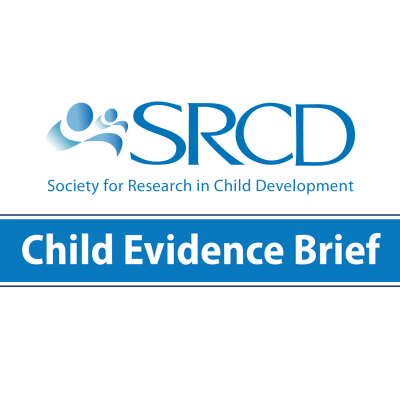What Does PK - 3 Instructional Alignment Mean for Policy and Practice?
Social Policy Report Brief, Volume 30, Issue 2
Why Does This Matter?
With most 4 year olds in the United States now in center-based early care, the need for aligning instruction from preschool through the early grades (PK-3) has become more pressing. Yet so far there has been little guidance on how to create alignment. Research on PK-3 alignment seeks to provide general principles for creating instructional continuity that sustains and enhances student learning.
Research can guide efforts to create a coherent educational experience for children in which each grade from pre-K through the early elementary years builds and elaborates on what was learned the previous year (PK-3 alignment).
Background
- PK-3 alignment is intended to provide a continuous education to sustain gains made in preschool and increase learning through the early elementary grades.
- Some PK-3 initiatives have endeavored to improve children’s early educational opportunities and sustain the benefits of high-quality early care and education by continuing services (e.g., health, nutrition) and providing other resources (e.g., reduced class sizes) that are typically connected to preschool programs.
- Little is known about the effects on instruction of many policy changes designed to promote PK-3 coherence (e.g., putting preschools and elementary schools in the same place, putting preschools under the auspices of elementary school principals).
- Continuity in instructional practices is less likely if: a) state and district standards and assessments for preschool are not well aligned; b) preschool standards and assessments are not aligned to those for early elementary grades; and c) schools do not provide opportunities for teachers to collaborate across grades.
- District policies and practices can mediate the effect of state policies on teaching. However, district-level efforts will affect instruction and learning only if appropriate practices are put in place at the school level.
What the Research Says
Continuity in instruction can contribute to students’ academic achievement when:
- instruction is sequenced, connected, and elaborated, with less time spent repeating material children already understand.
- children who develop skills in preschool are given opportunities to further those skills, enabling them to progress and avoid fadeout.
- instruction is targeted just above children’s current skill level, which is more motivating and productive than instruction on skills already mastered or instruction far beyond children’s skill level.
- Three contextual factors are likely to facilitate instructional continuity.
- Continuity in how teachers approach their teaching: Ensuring that approaches to subject areas are similar from PK to 3 could boost children’s familiarity and confidence.
- Continuity in social expectations: Expectations for children’s social behavior should increase grade to grade, but as with academic instruction, increased responsibility should come gradually and build on previous responsibilities.
- Continuity in parent involvement: Parental engagement is currently stressed more in preschool than elementary school. Yet if parents invited to be involved in preschool are not given opportunities to engage later, their advocacy and involvement may wane.
Policy Implications
To support PK-3 alignment, policymakers and education leaders should focus on:
- aligning standards and assessments within and across grades at state and district levels.
- linking formative assessments to standards.
- developing a database, accesible to teachers, documenting student learning from PK through elementary school.
- having a clear instructional framework to guide school-level practices and decisions.
- providing continuity in the relative emphasis on social- emotional development and academic skills (in most cases, increasing attention to academic skills in PK and to social-emotional development in K-3).
- creating continuity in PK-3 curriculum.
- providing professional development and opportunities for collaboration among PK-3 teachers.
- ensuring that the same master teacher or coach works with teachers across PK-3.
To support instructional quality that builds from year to year:
- Topics in each grade should build on those covered in previous grades.
- Instruction should become increasingly complex in accordance with the discipline; be aligned with typical learning trajectories; and be targeted just above each student’s skill level.
- Connections should be made between topics covered and underlying concepts.
- Teachers should give students opportunities to broaden and deepen their skills by applying them in new contexts, and to take stock of their progress in understanding and skills.
This brief summarizes a longer Social Policy Report, "PK‐3: What Does It Mean For Instruction?," by Deborah Stipek, Judy Koch Professor of Education, Stanford University; Doug Clements, Kennedy Endowed Chair in Early Childhood Learning and Professor of Education, University of Denver; Cynthia Coburn, Professor, School of Education and Social Policy, Northwestern University; Megan Franke, Professor of Education, University of California, Los Angeles; and Dale Farran, Antonio and Anita Gotto Chair in Teaching and Learning, Professor of Psychology and Human Develoment, Peabody College, Vanderbilt University.


